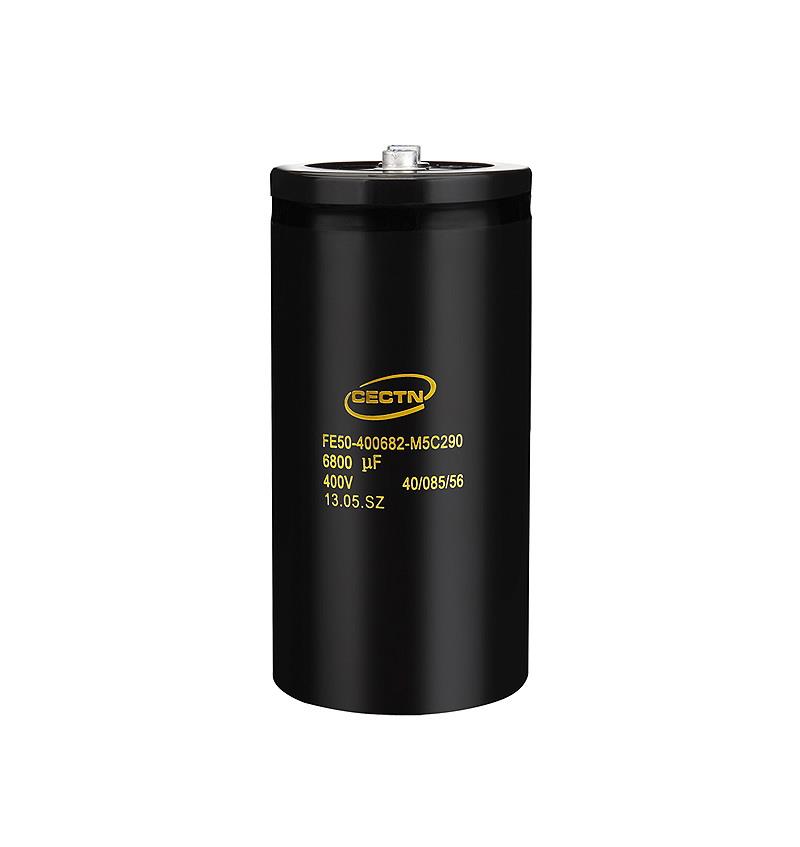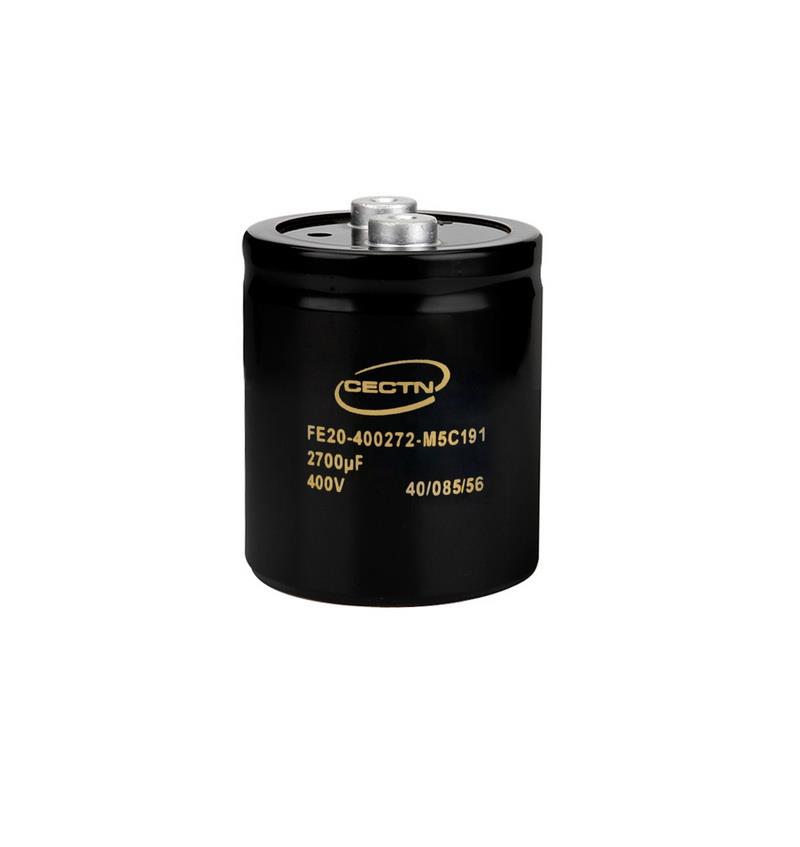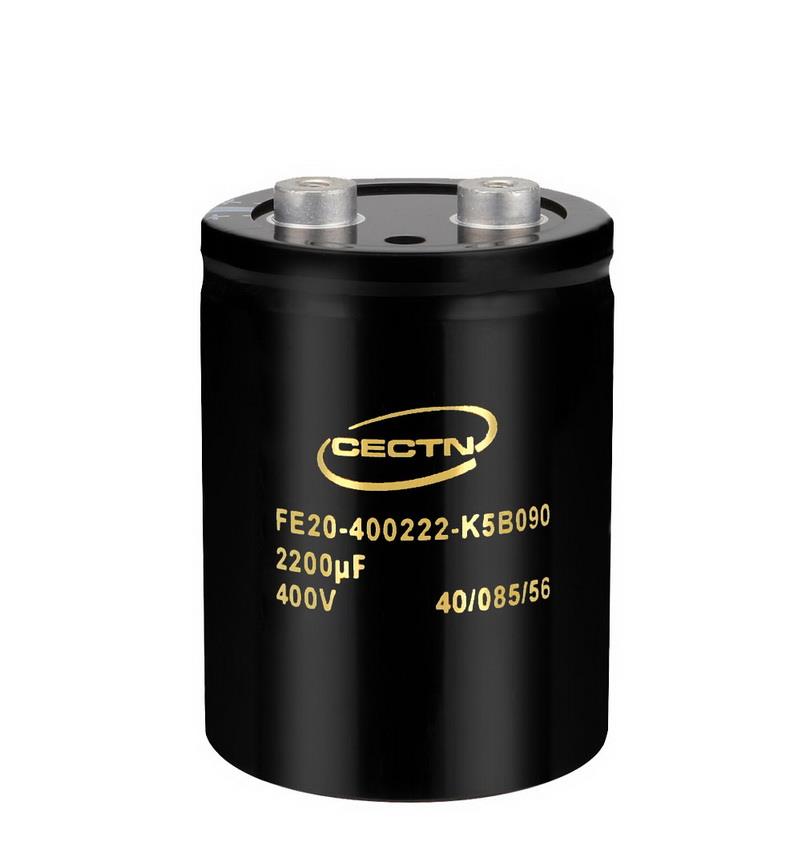Precautions for capacitor use
 Scan!
Scan!
1. Aluminum electrolytic capacitor is of bipolar structure (see the mark on the capacitor body). Pay attention to the polarity during installation, and do not install it reversely. Application of alternating current or reverse voltage may cause short circuit or damage to the capacitor: the polarity in the AC circuit may be reversed or undetermined, so bipolar capacitors are not suitable for AC applications.
2. The DC voltage applied to the terminal of the capacitor shall not exceed its rated working voltage, otherwise the leakage current will increase rapidly, and the capacitor will be damaged, even short circuit and open fire will be caused. In order to prolong the service life of the product, it is recommended to use the capacitor at 70-80% of the rated voltage.
3. The ripple current loaded into the capacitor must be within the allowable range. If it is overloaded, the capacitor will overheat and the electrical performance will be damaged, the machine will be damaged, and even open fire will be caused. Please note that the sum of ripple voltage and peak value of DC working voltage shall not exceed rated DC voltage.
4. The capacitor must be used within the allowable working temperature range. Room temperature working conditions can extend the service life.
5. Capacitors with a shell diameter of 8mm or more are equipped with a safety valve. In the solder joint aluminum electrolytic capacitor, the safety valve is usually located at the bottom of the shell, and the bolt aluminum electrolytic capacitor is usually located at the leading end of the capacitor (on the cover plate). Enough space needs to be left around the valve to maintain optimum operation. The recommended sizes are as follows: when d = 18 ~ 35mm, keep more than 3mm space; when d = 40mm or more, keep more than 5mm space.
6. When the internal pressure of the capacitor is too high, the gas will be released through the safety valve, resulting in gaseous liquid around the safety valve, which is not the leaked electrolyte.
7. When installing the capacitor on the circuit board, pay attention that the safety valve should not face down, and do not walk any metal or circuit near the safety valve. However, when installing the aluminum electrolytic capacitor with screw bolt on the side, make sure that the negative pole is under the positive pole; do not reverse the voltage. Otherwise, it may lead to excessive pressure, electrolyte leakage, short circuit and even open fire.
8. The capacitor should be stored in normal temperature and normal humidity environment without acid or alkali. If exposed to high temperature, such as direct sunlight, its service life will be reduced. If it is stored in acidic or alkaline environment, the solderability of lead wire will be affected.
9. After long-term storage, the leakage current of aluminum electrolytic capacitor may increase. Therefore, before use, it is necessary to apply the rated working voltage for 6-8 hours.
10. Manual welding: A. it must be carried out under the specified conditions. Temperature: 350 ℃; soldering iron use time: 3 seconds. b. Make sure that the soldering iron does not touch any part of the capacitor body.
11. Do not use excessive force at leads and terminals. Do not move the capacitor or move the PCB by holding the capacitor tightly after the capacitor is welded to the PCB. Please observe the following rules to prevent excessive pressure on the capacitor: A. do not tilt or bend the capacitor after welding. b. Make sure that the distance between the product leads matches the distance between the solder joints on the PCB.
12. The aluminum shell is not isolated from the cathode, so do not place any conductor under the aluminum capacitor on the PCB board, otherwise it may cause short circuit. The shell and top of the capacitor for switching power supply are provided with a high-voltage heat shrinkable sleeve, which can ensure the safe use.
13. The lead of capacitor with shell diameter over 14mm shall not be used for fixing.
14. If the capacitor comes into contact with water, salt water, oil and other conductive liquids, or is used in dewing state, it will cause failure. Please avoid using the capacitor with liquid. Wipe clean and dry before use.
15. Do not use or place in the environment containing hydrogen sulfide, nitrous acid, sulphurous acid, chlorine, bromine and other halogen compounds, ammonia and other harmful gases. If the gas intrudes into the capacitor, it will cause corrosion. Fumigation and insecticide spray will also cause corrosion during import and export, so please avoid.
16. It should not be placed in places exposed to ozone, ultraviolet and radiation.
17. Do not use it in places with excessive vibration or shock. If the capacitor falls freely, it will immediately lead to problems such as increased leakage.
18. If you have any questions, please contact us.
同类文章排行
- Tangent of loss angle of electrolytic capacitor
- Production process of bolt aluminum electrolytic capacitor
- Definition of capacitance of electrolytic capacitor
- Material number description of CECTN aluminum electrolytic capacitor
- How will capacitors develop in the new energy era
- Package description of CECTN capacitor
- Service temperature of aluminum electrolytic capacitor
- Precautions for capacitor use
- Definition of capacitor voltage in aluminum electrolysis
- Calculation formula of service life of aluminum electrolytic capacitor
最新资讯文章
- 250V 4700μF screw capacitor
- 250V 22000μF screw capacitor
- 250V 15000μF screw capacitor
- 300V 18000μF screw capacitor
- 300V 27000μF screw capacitor





